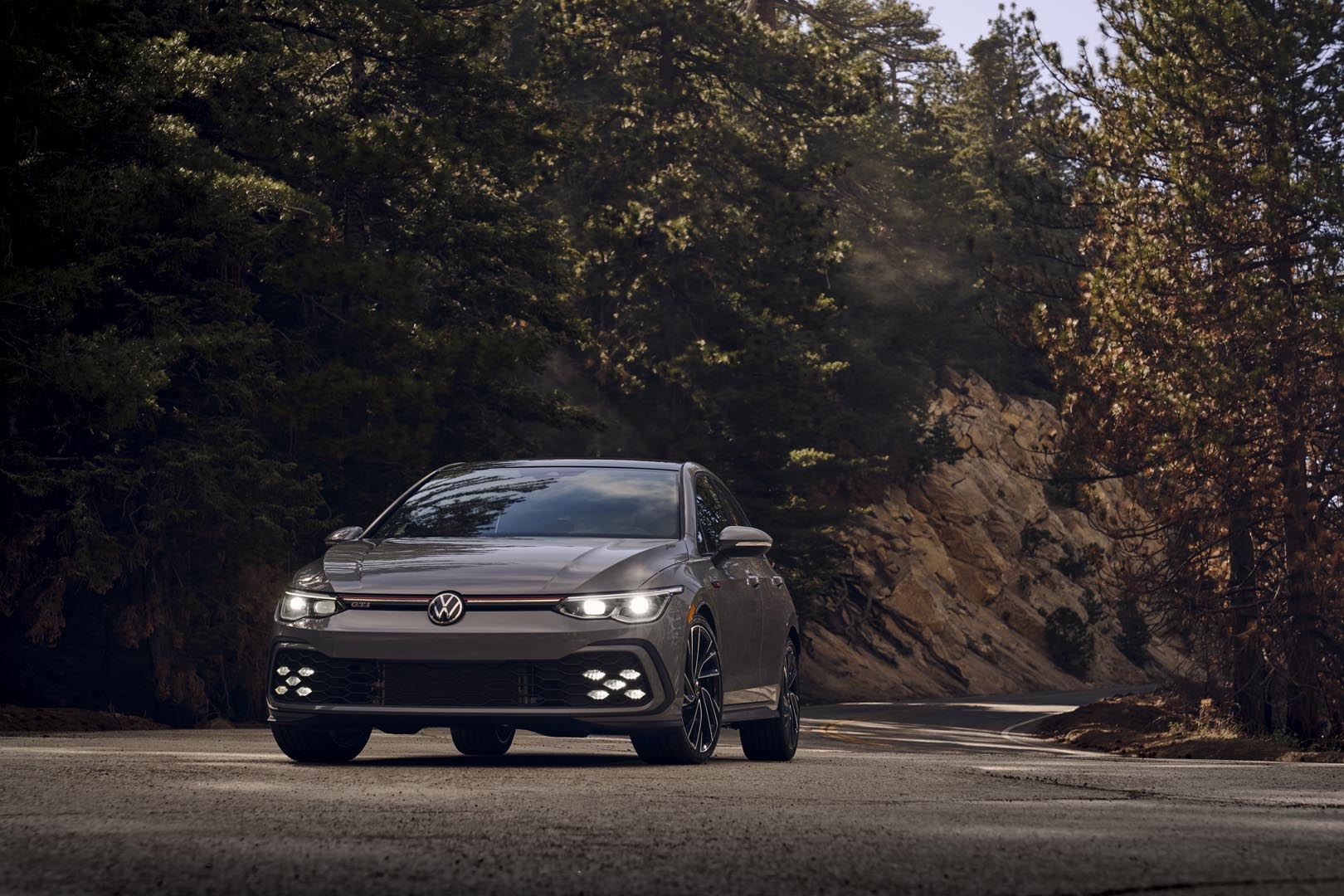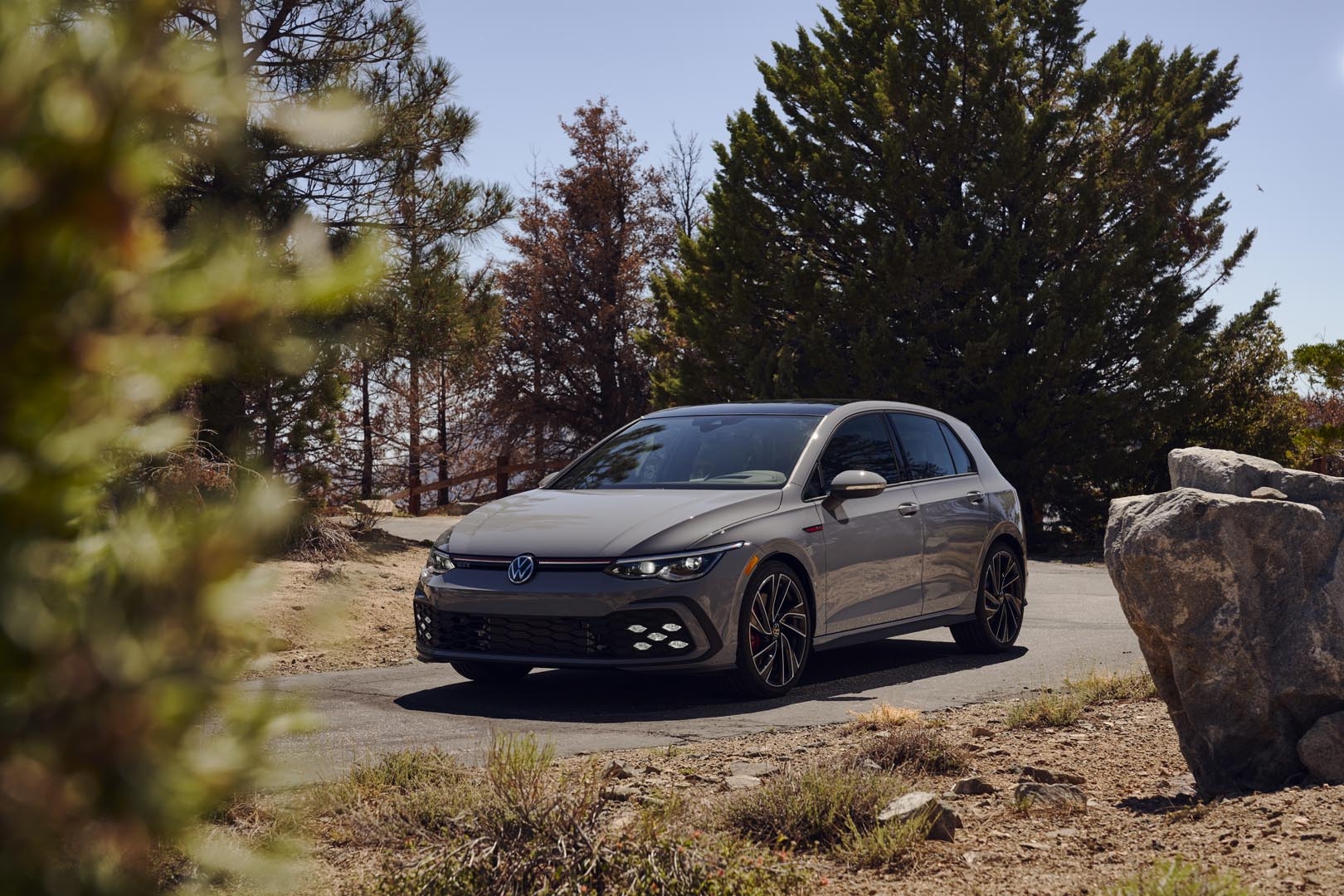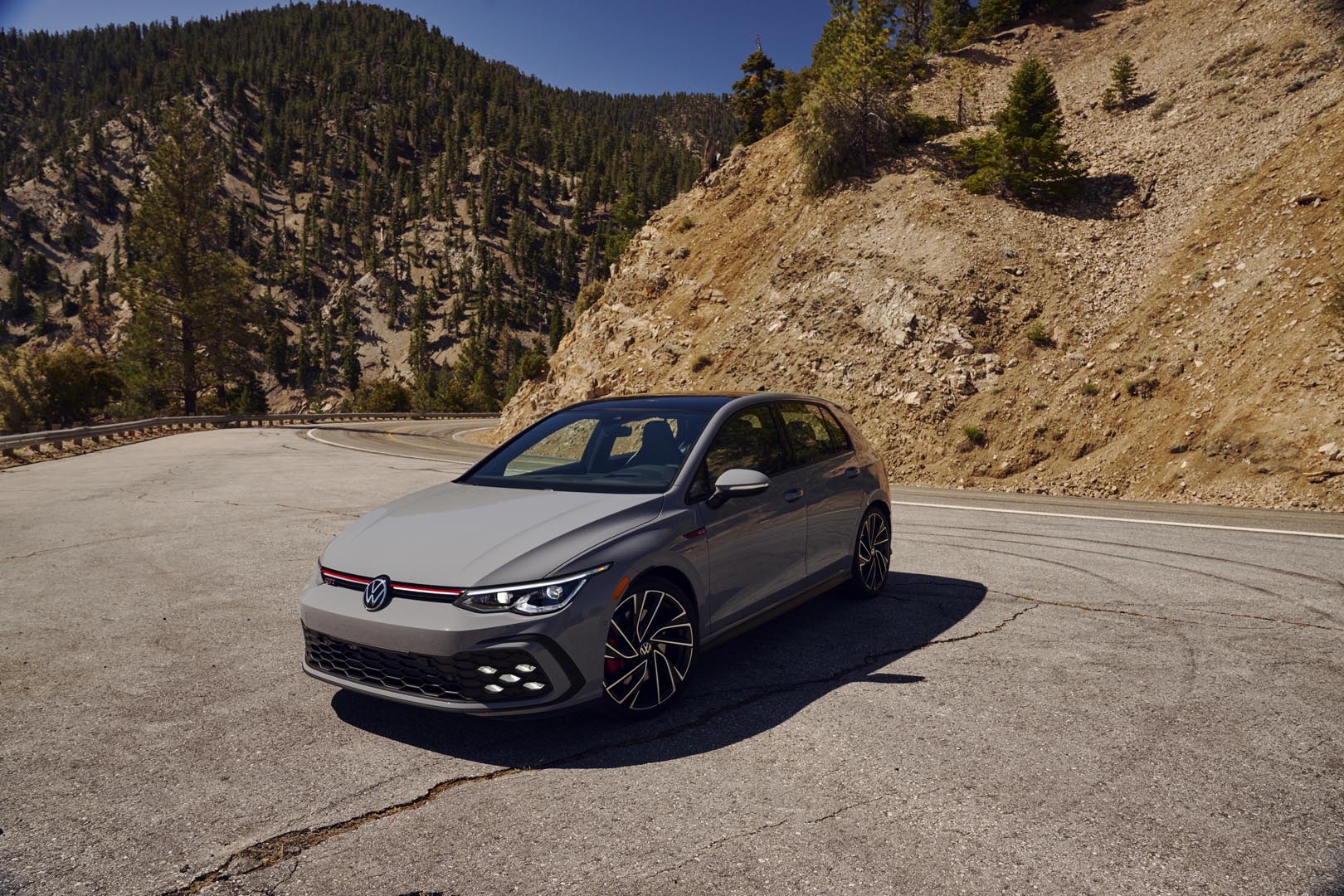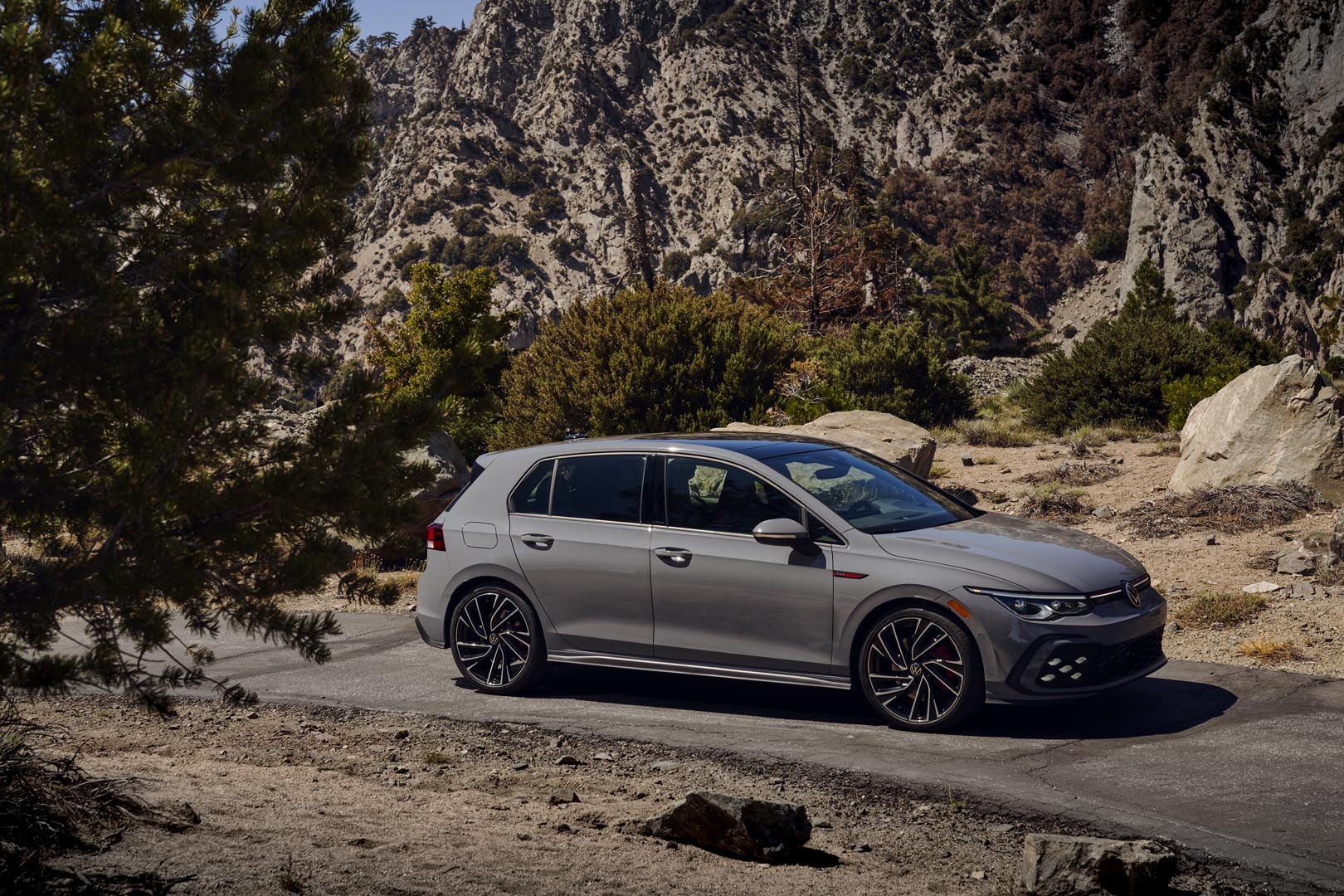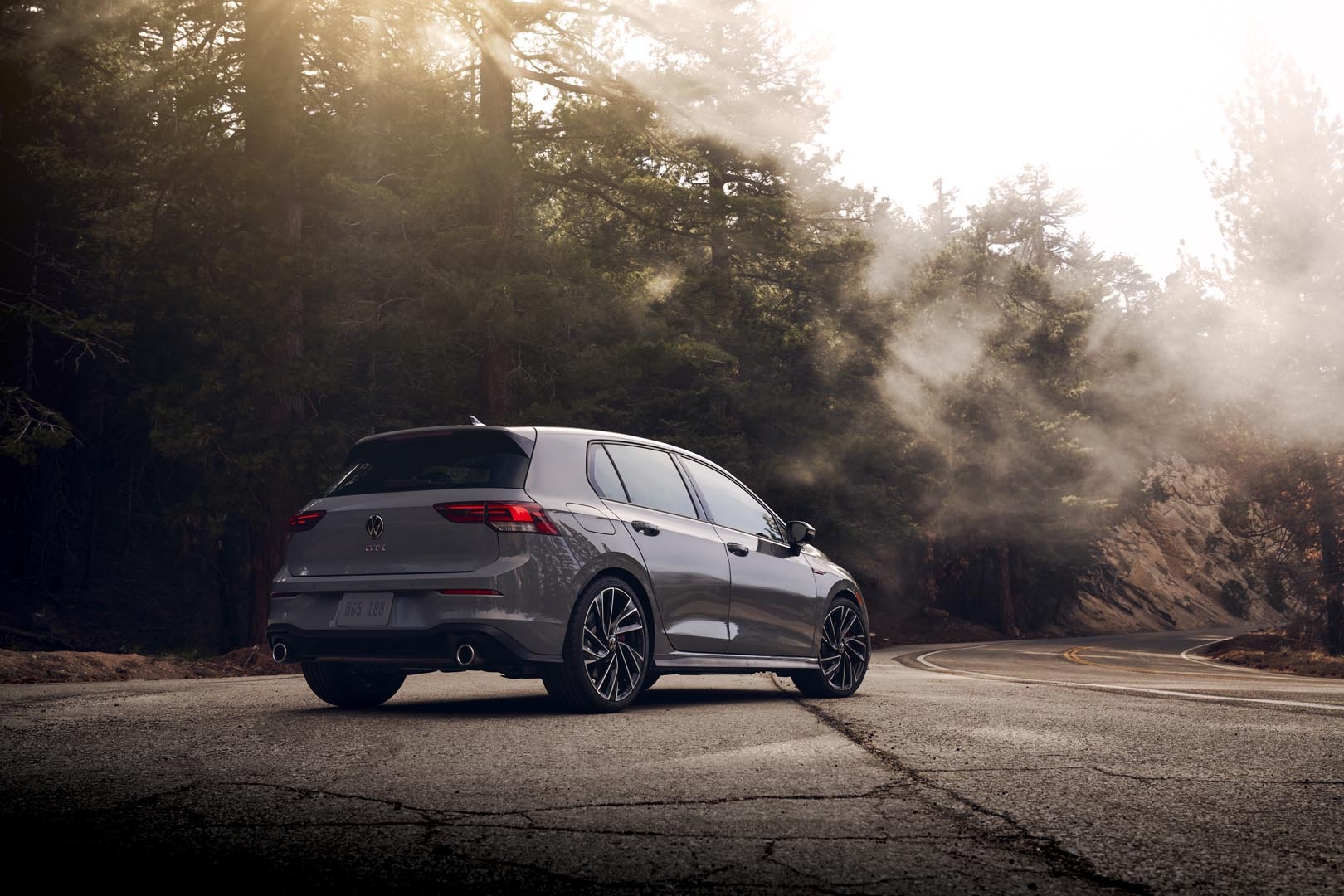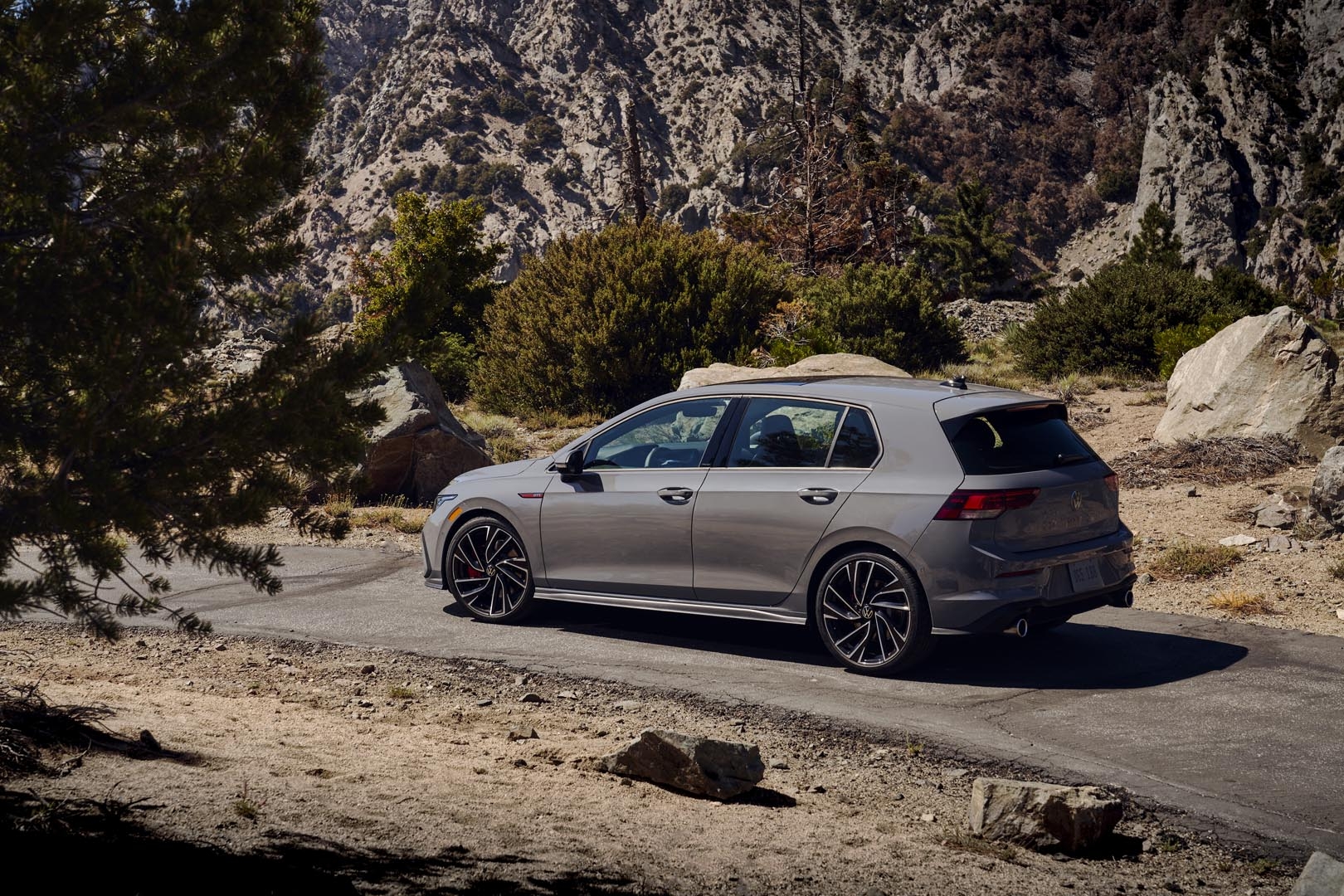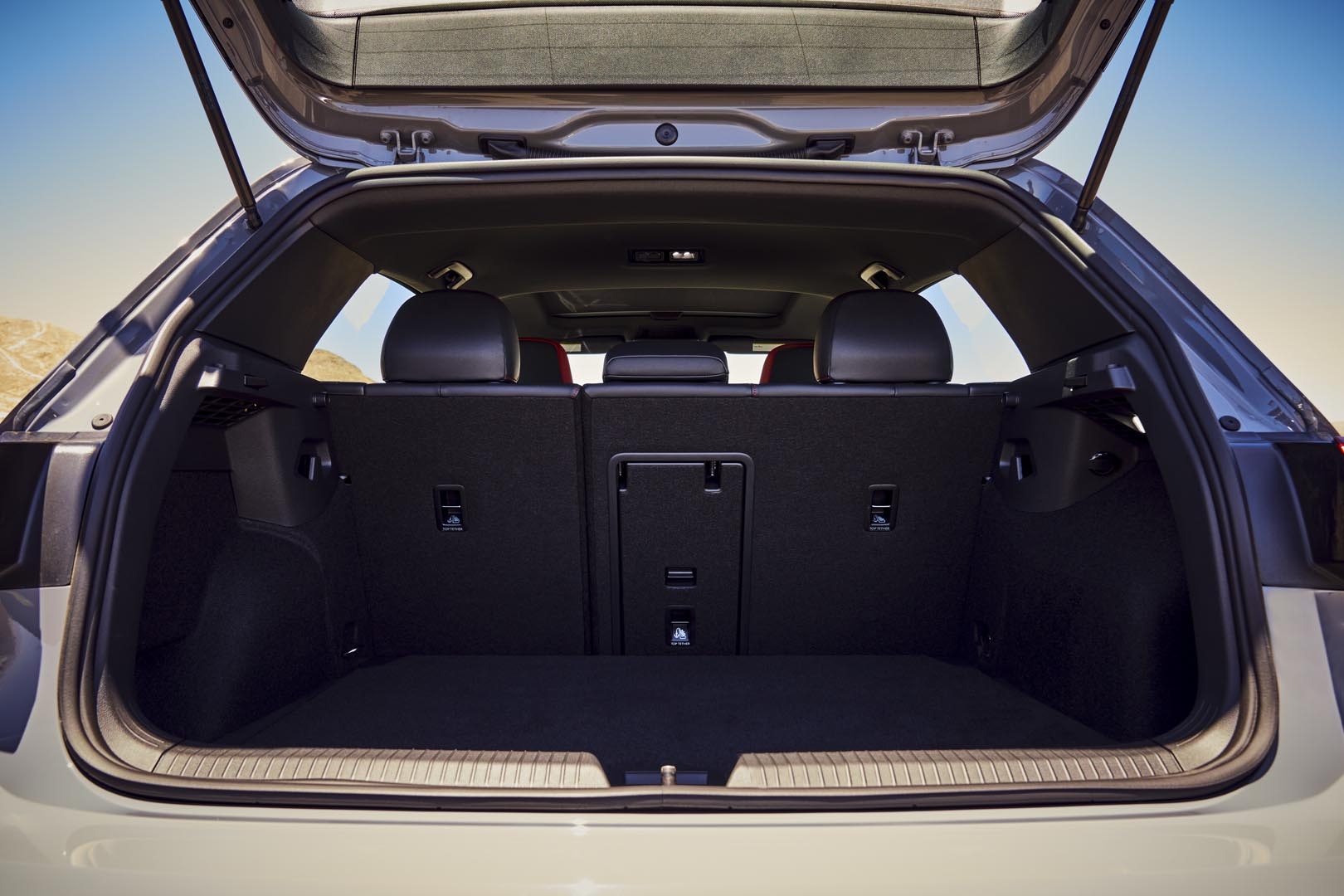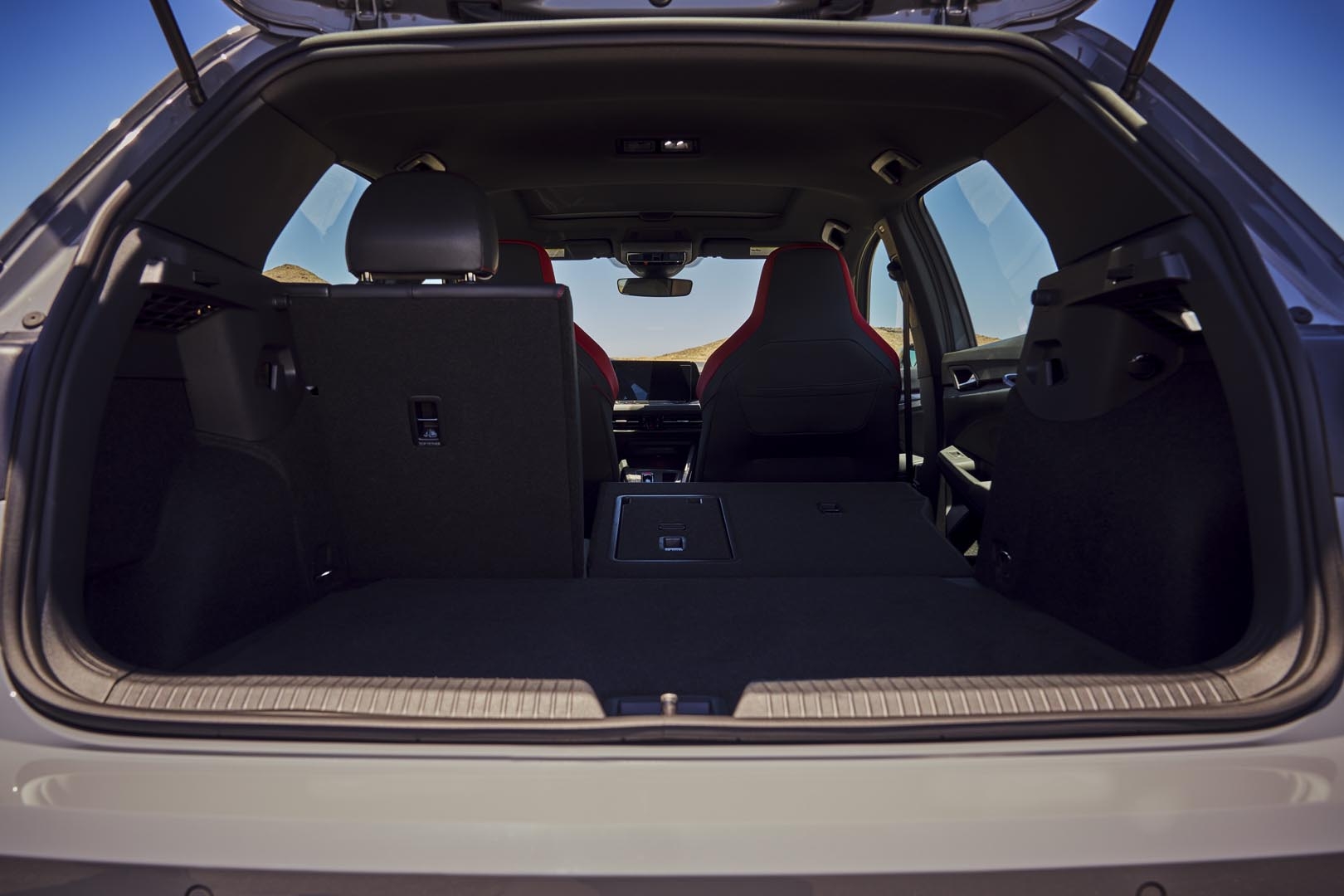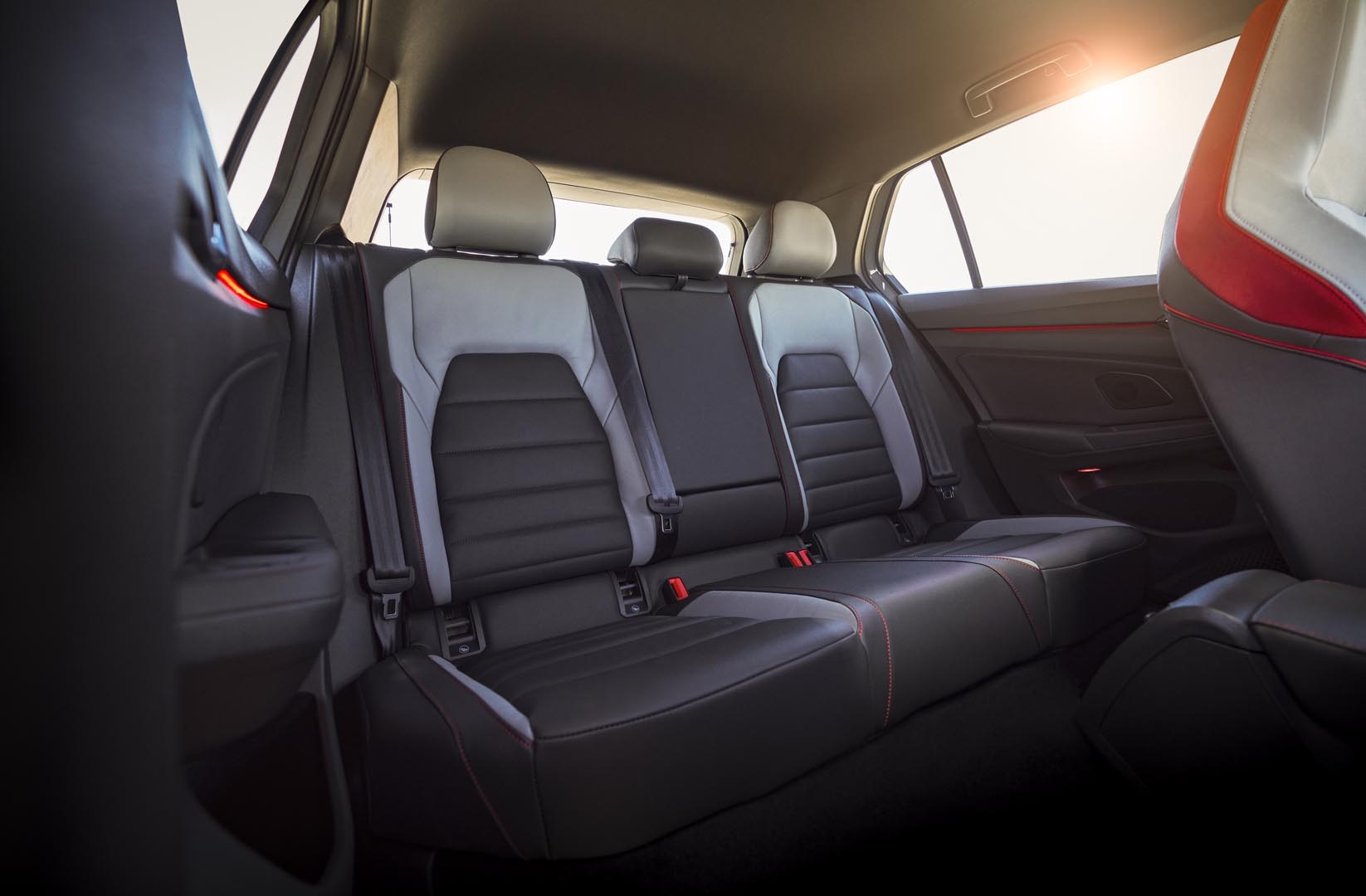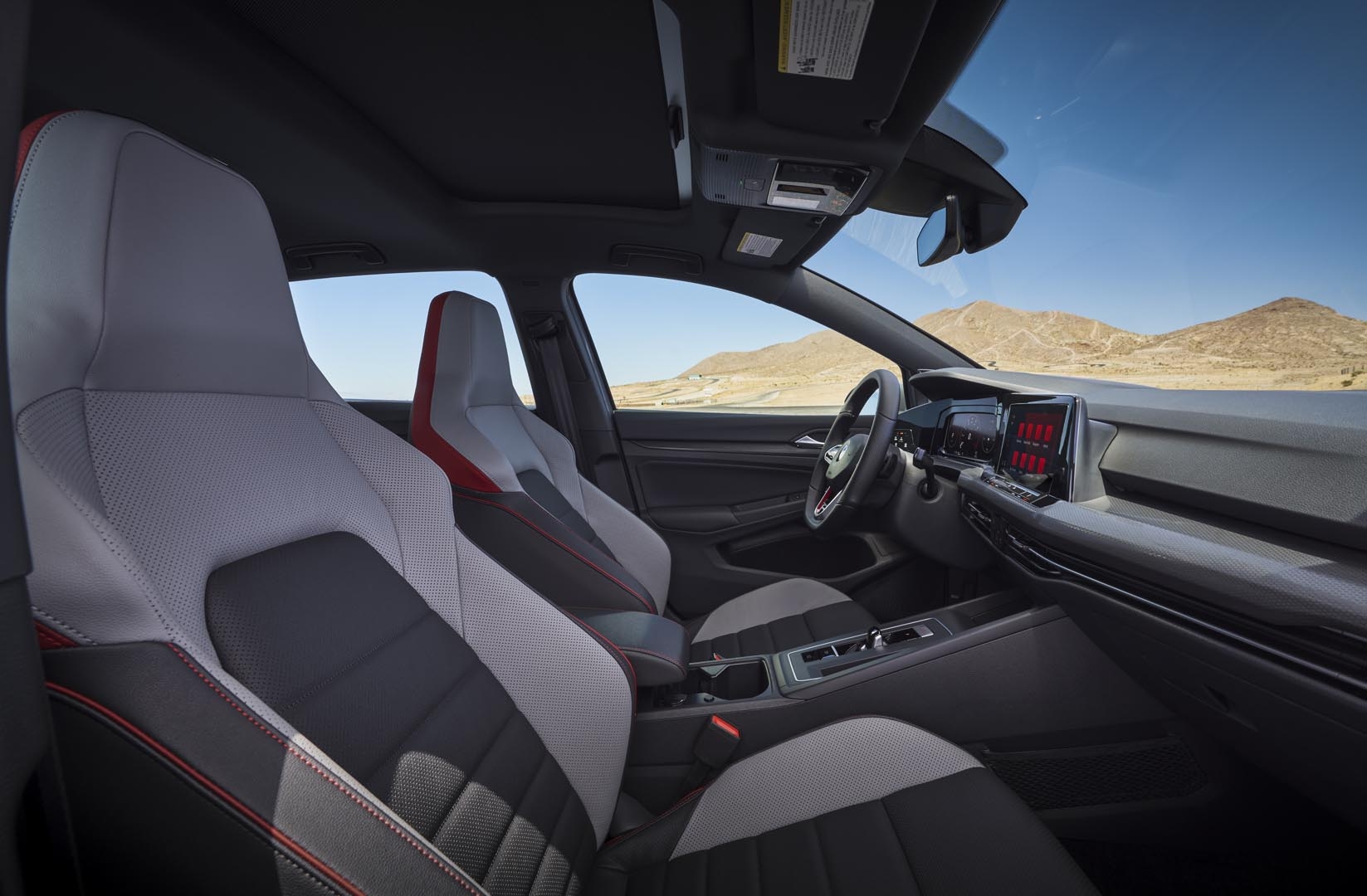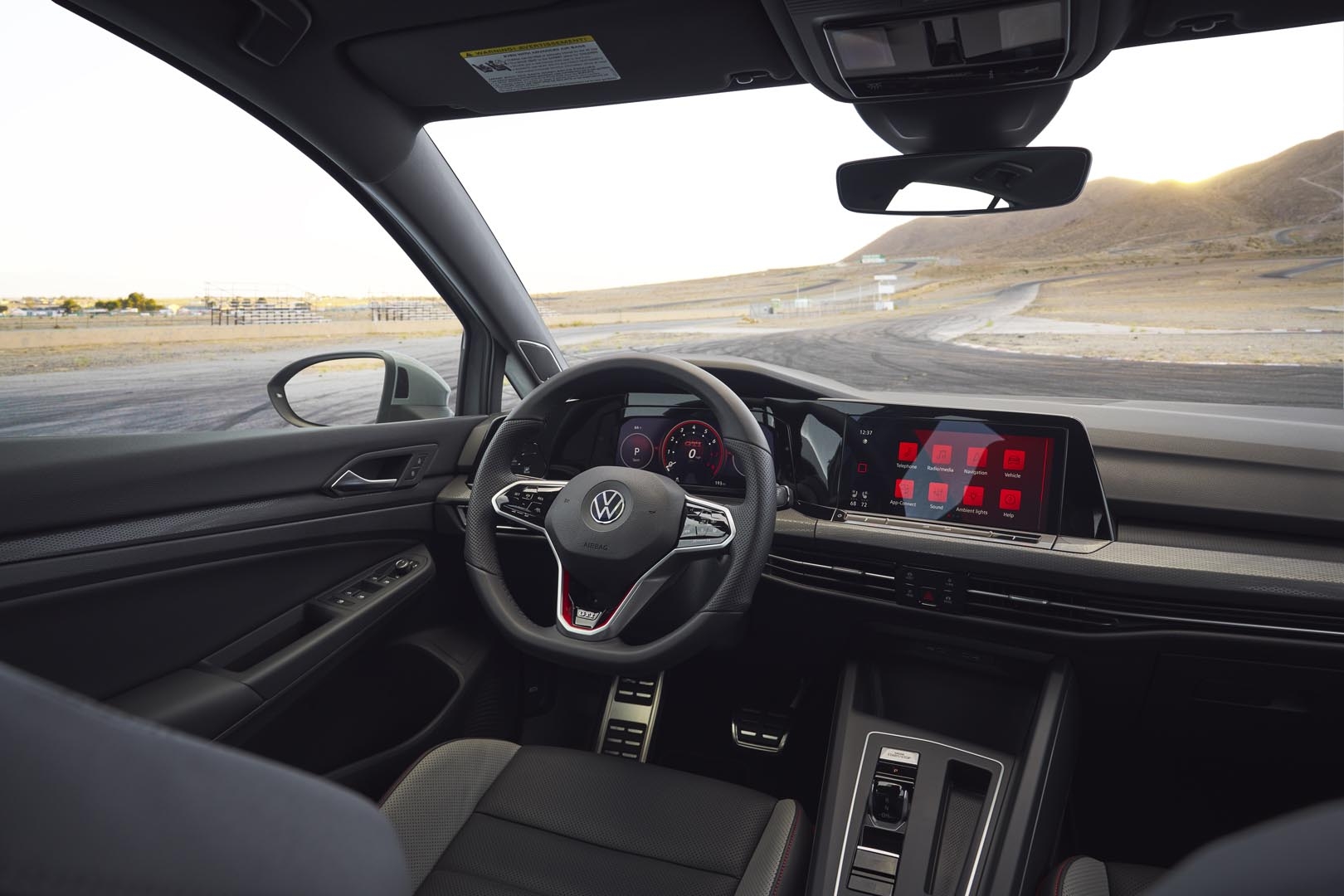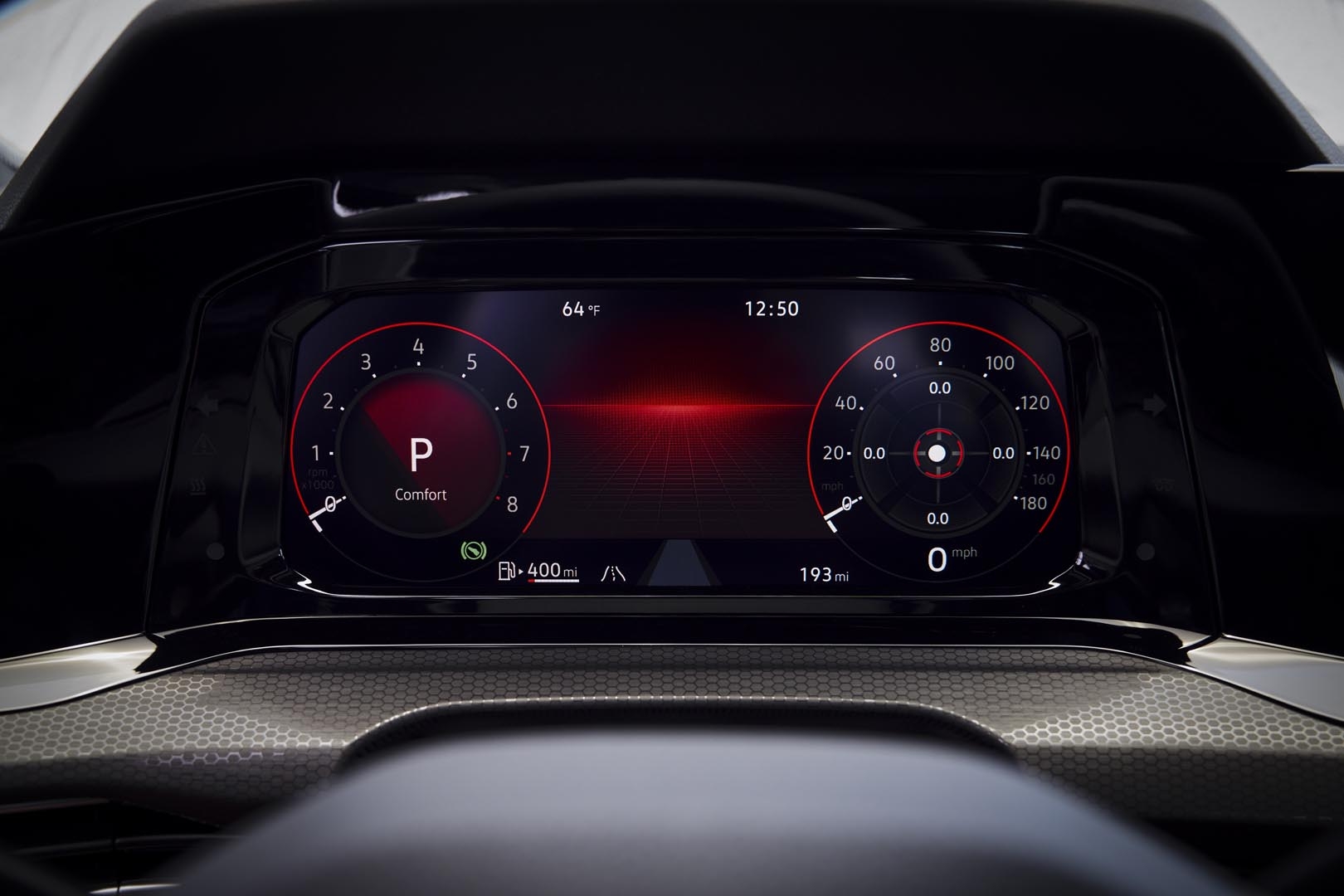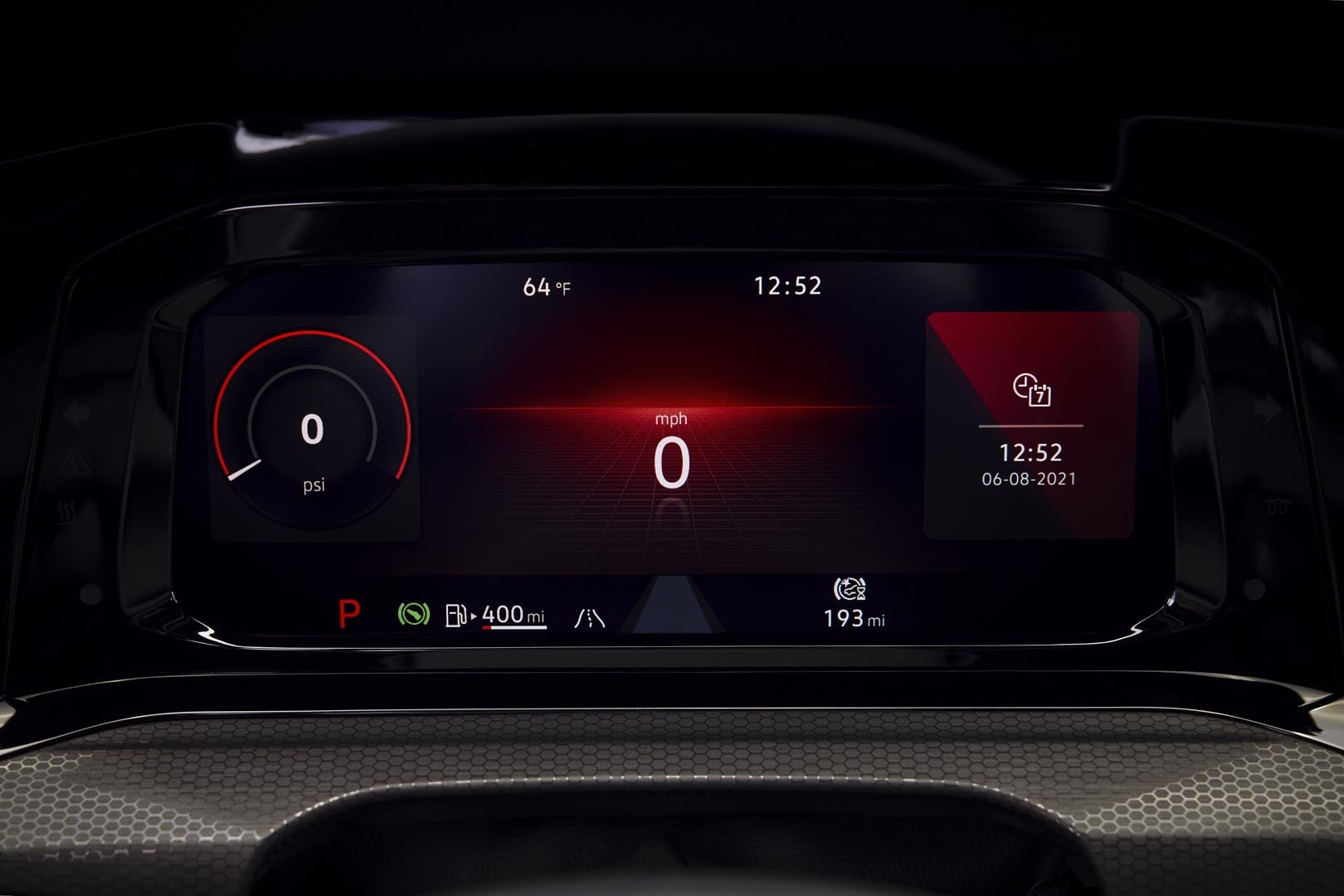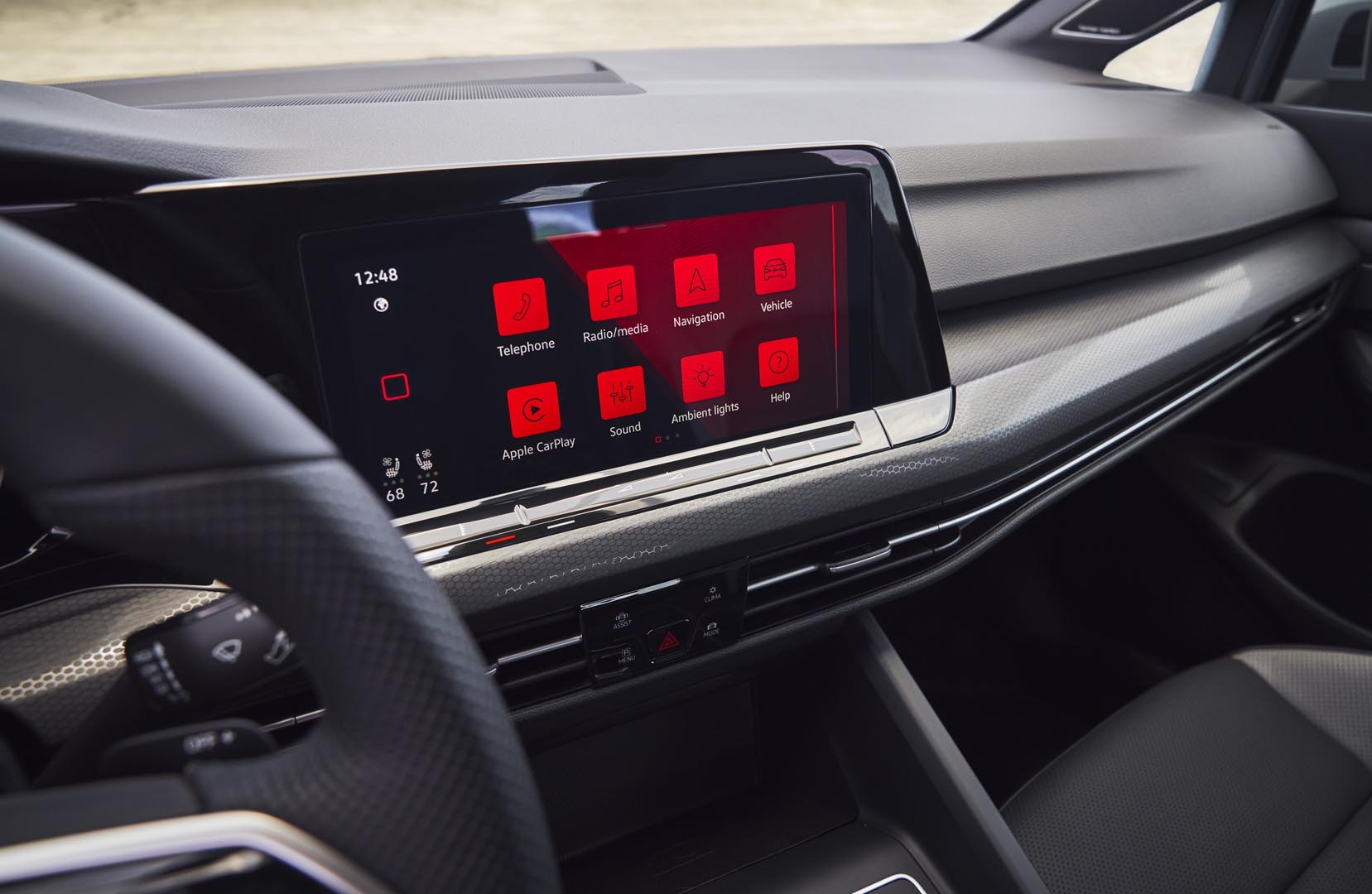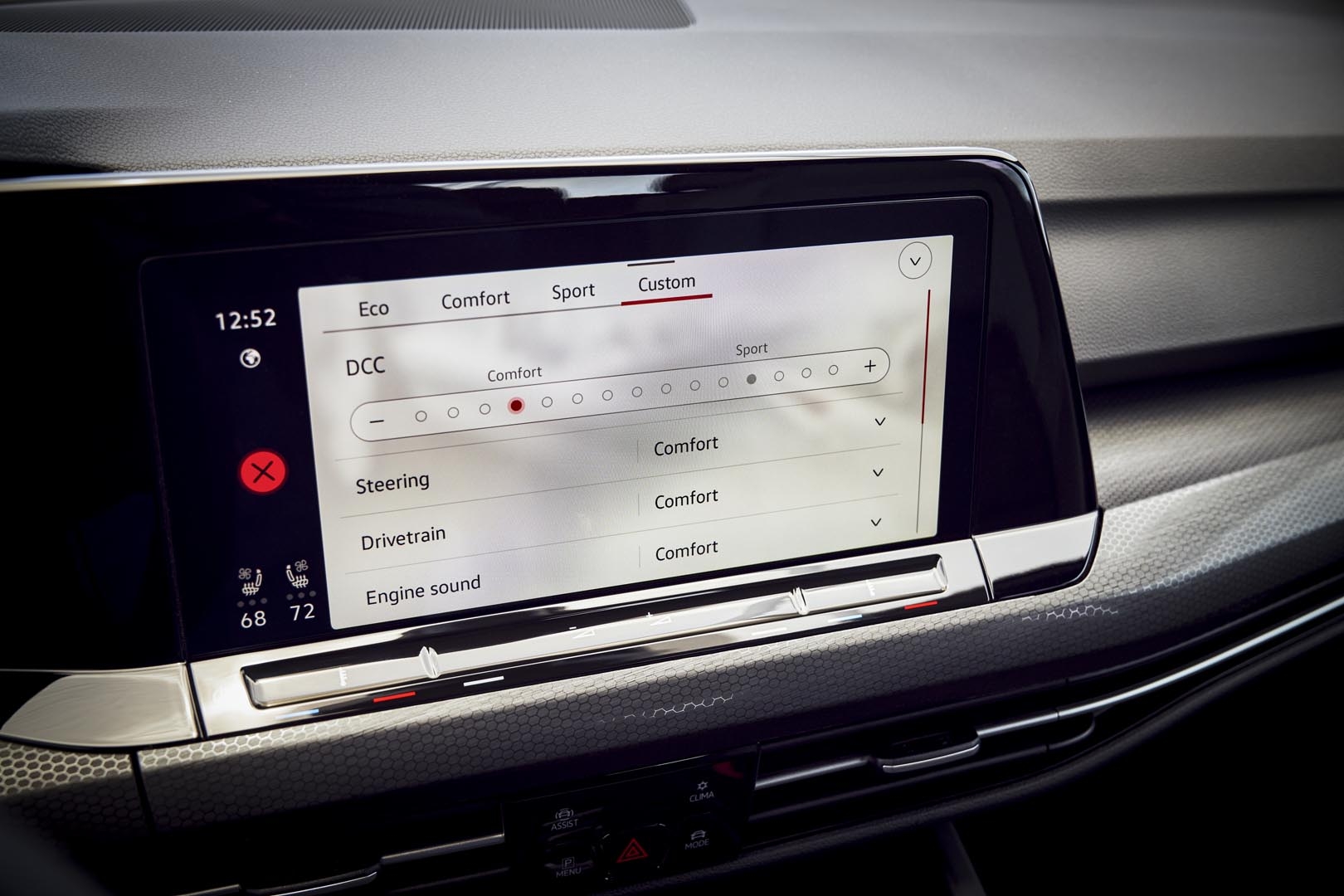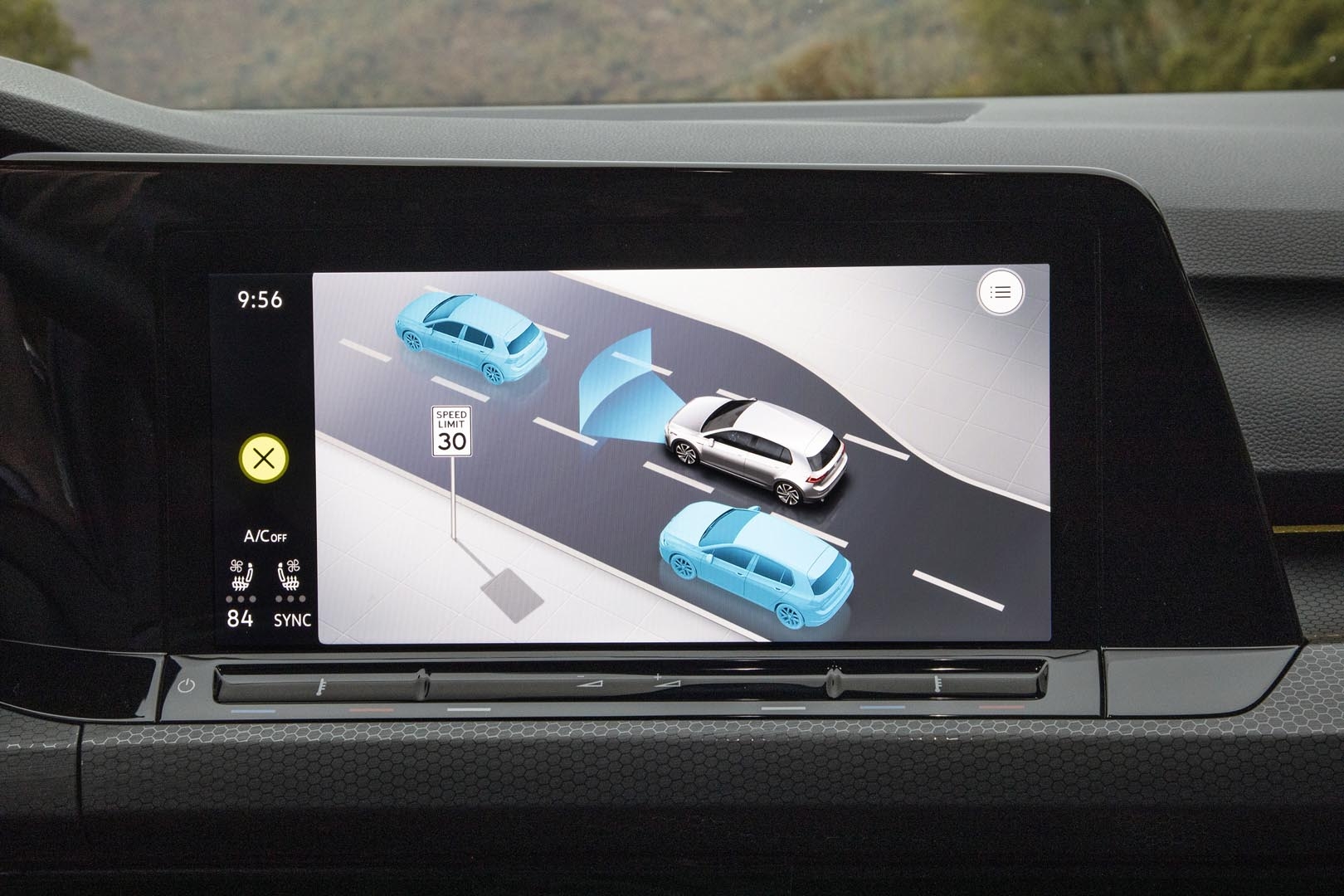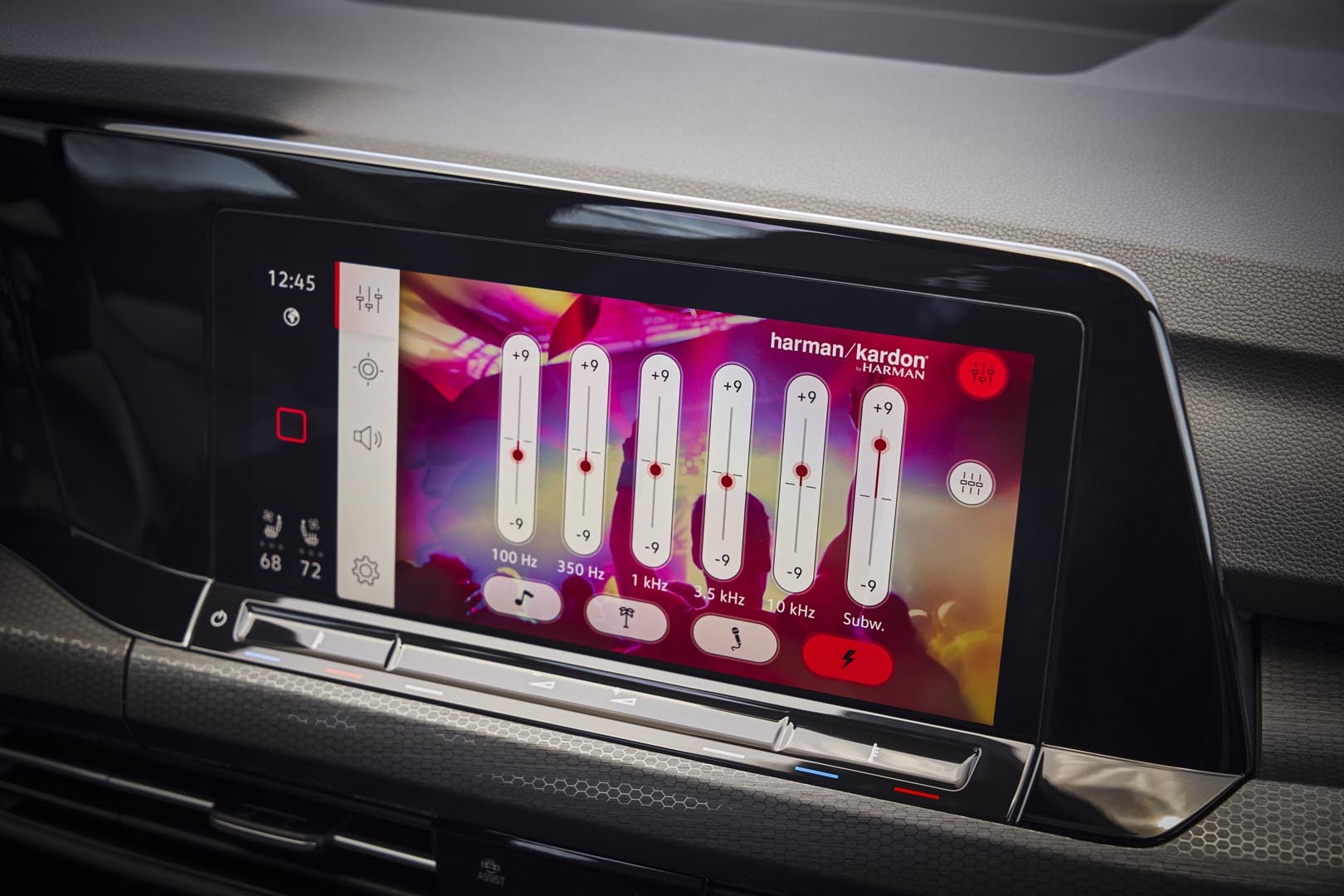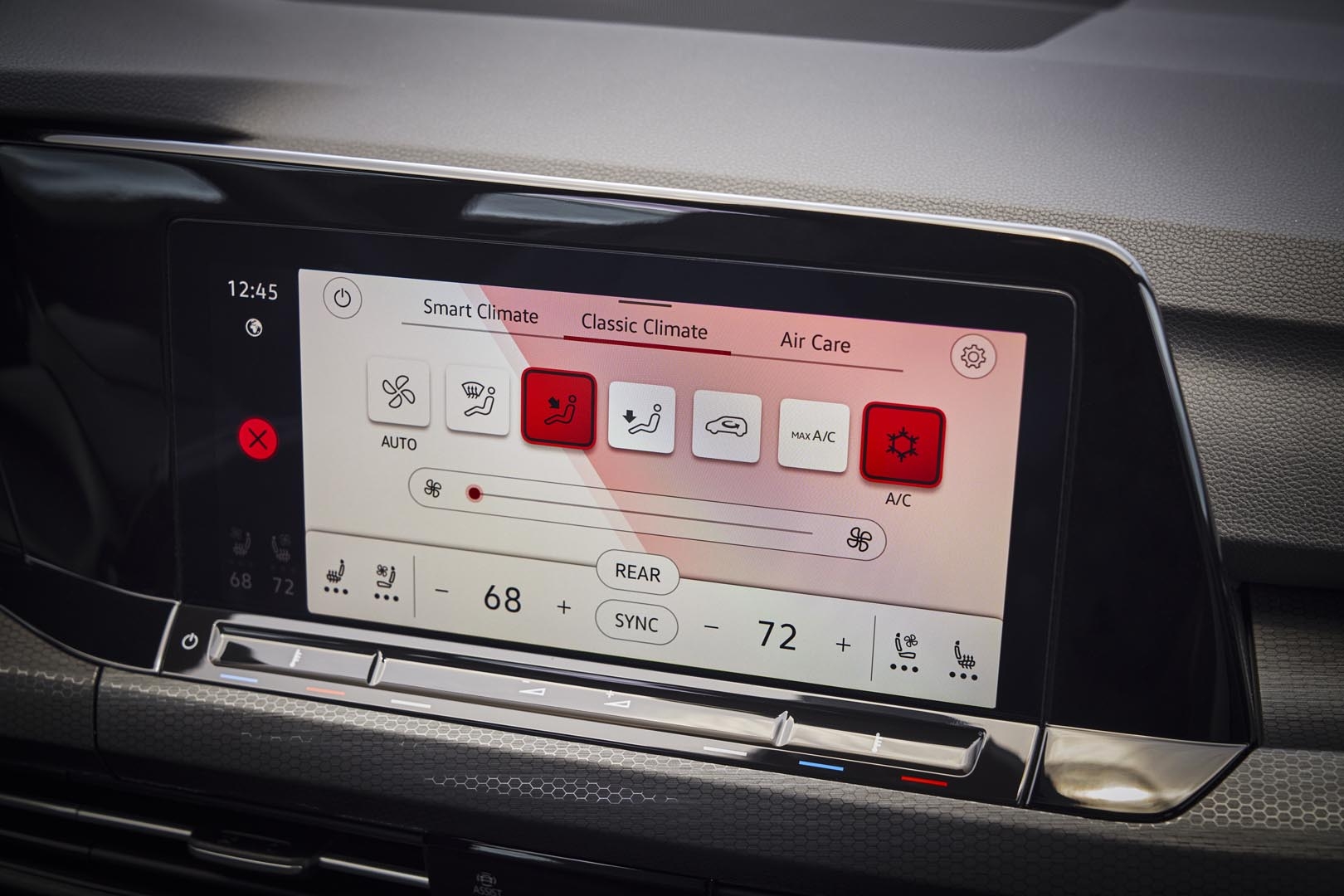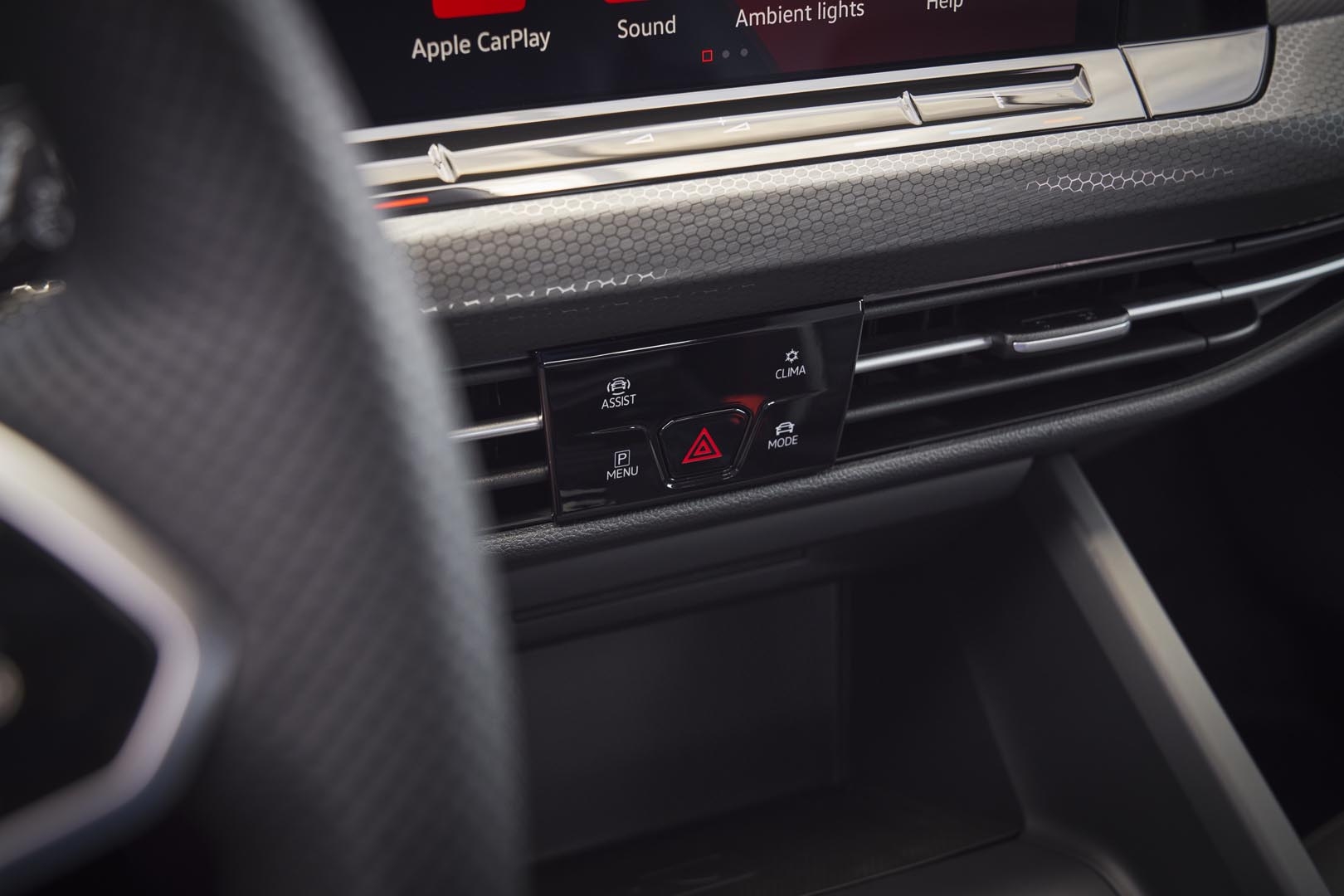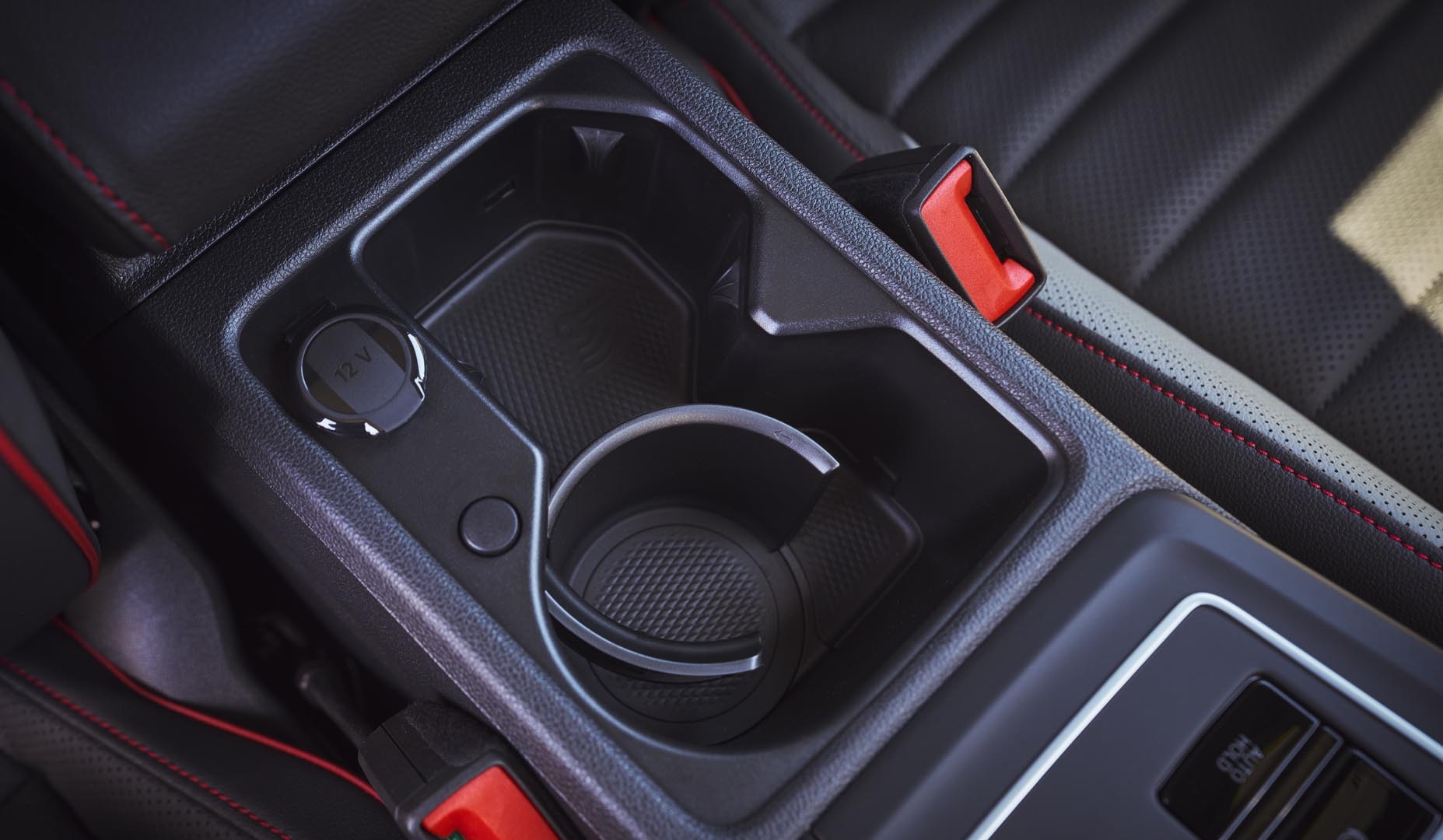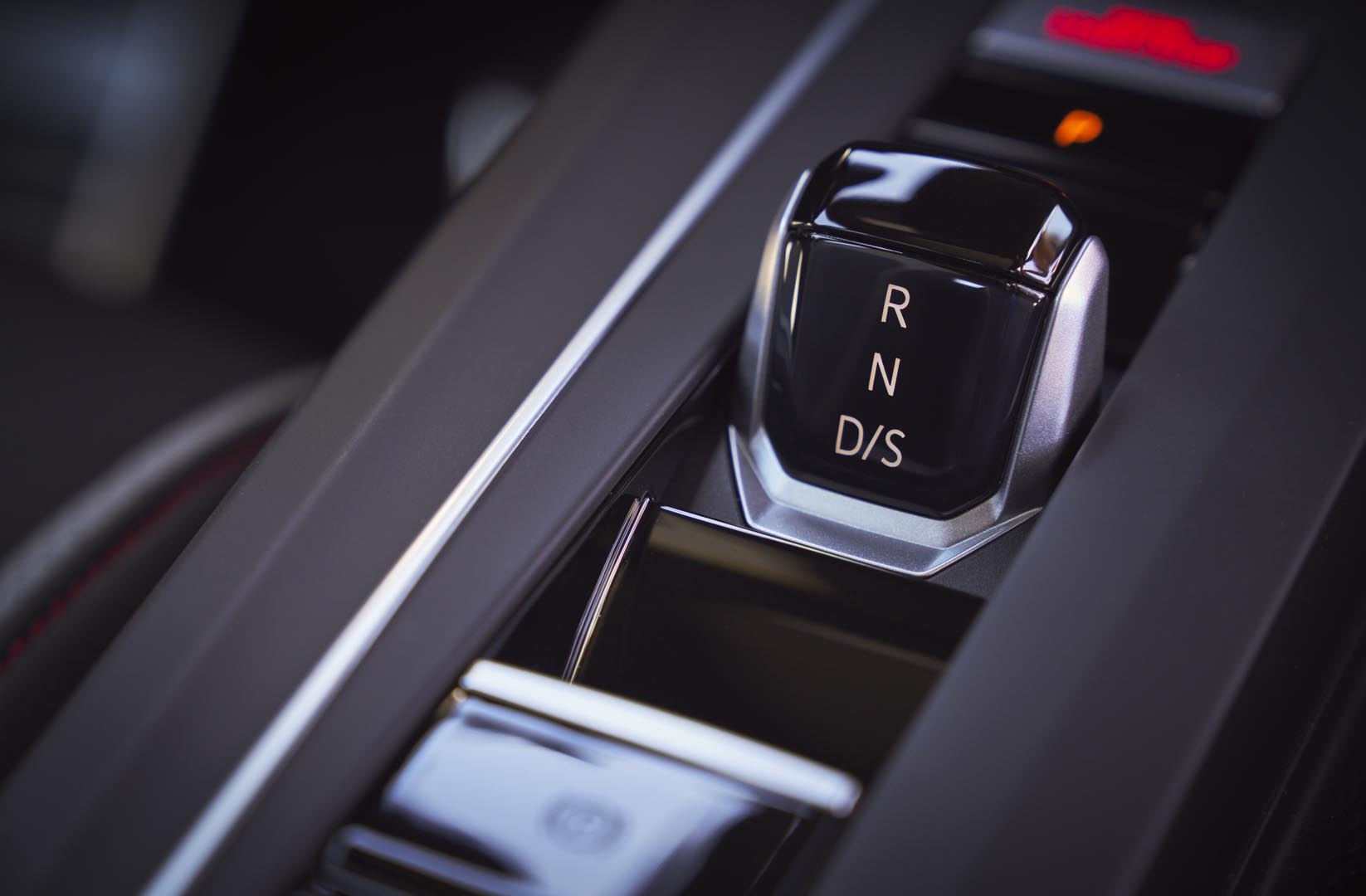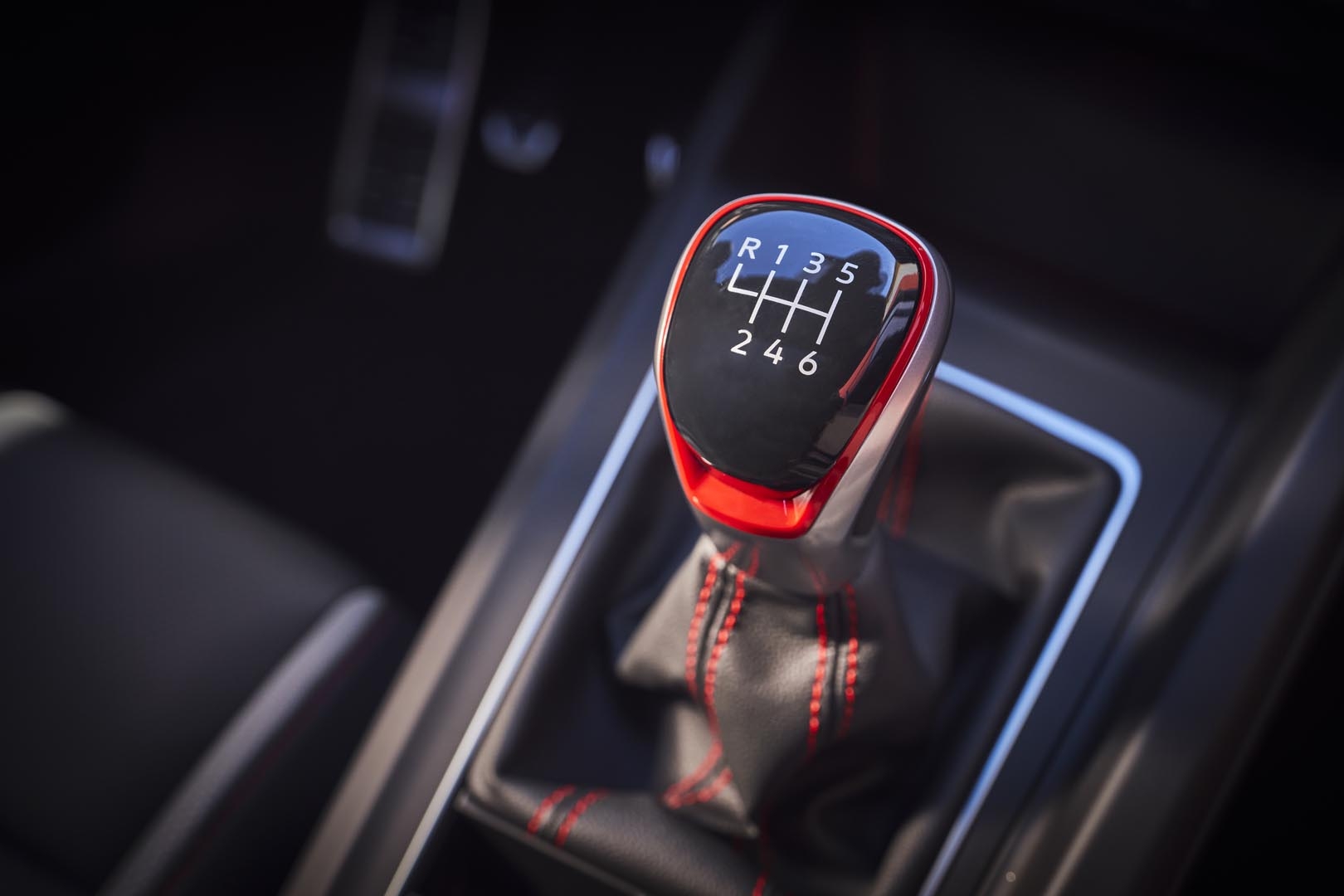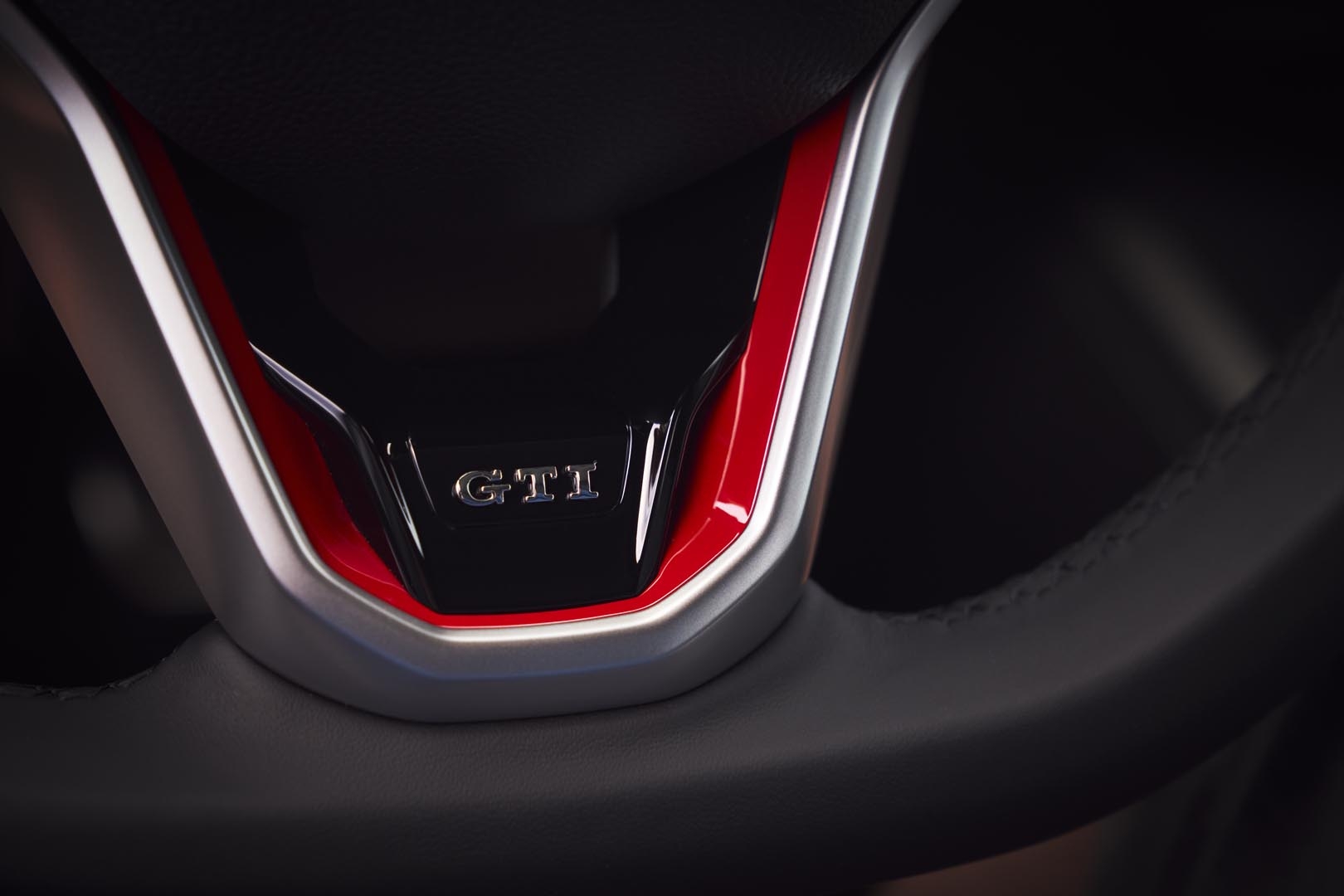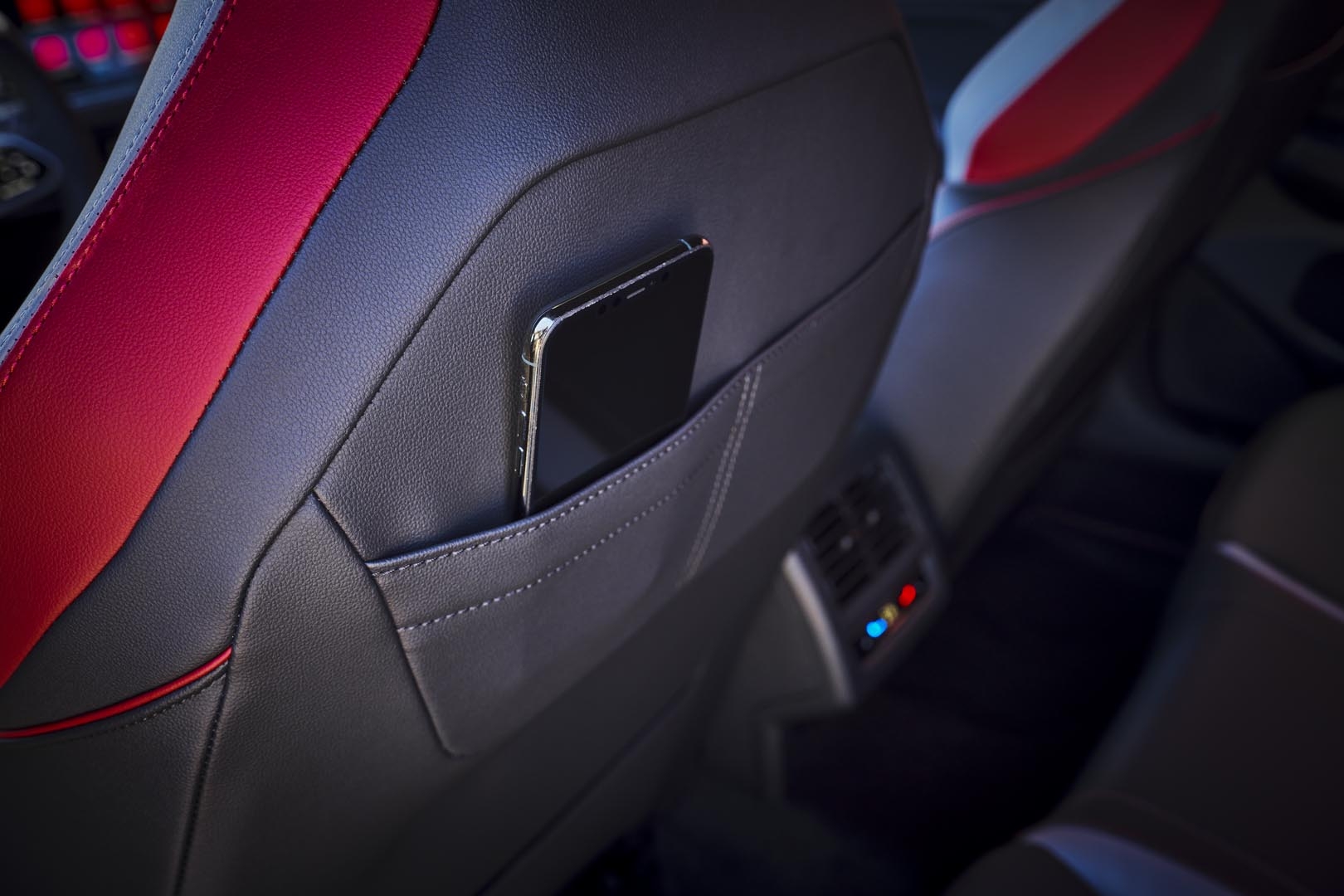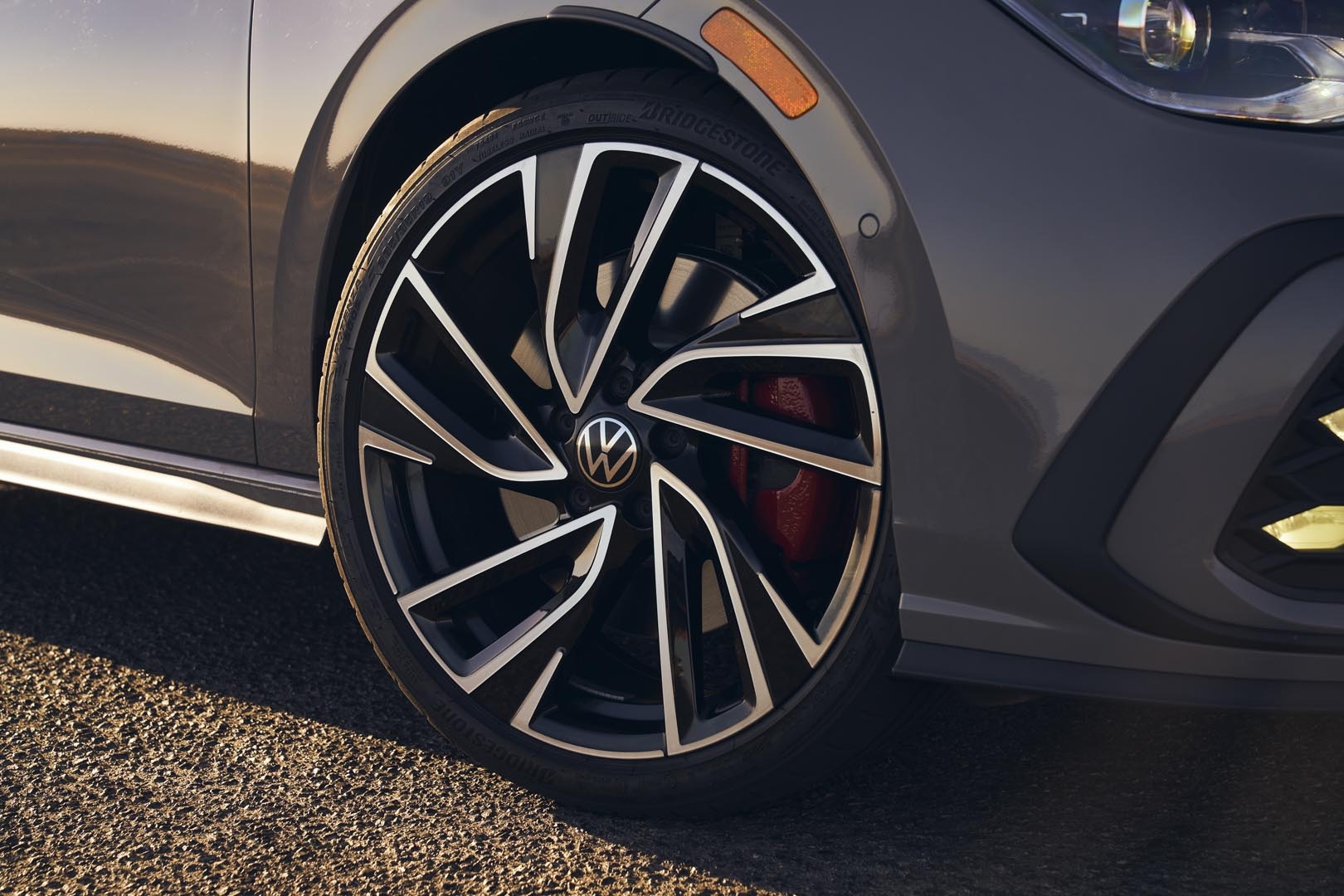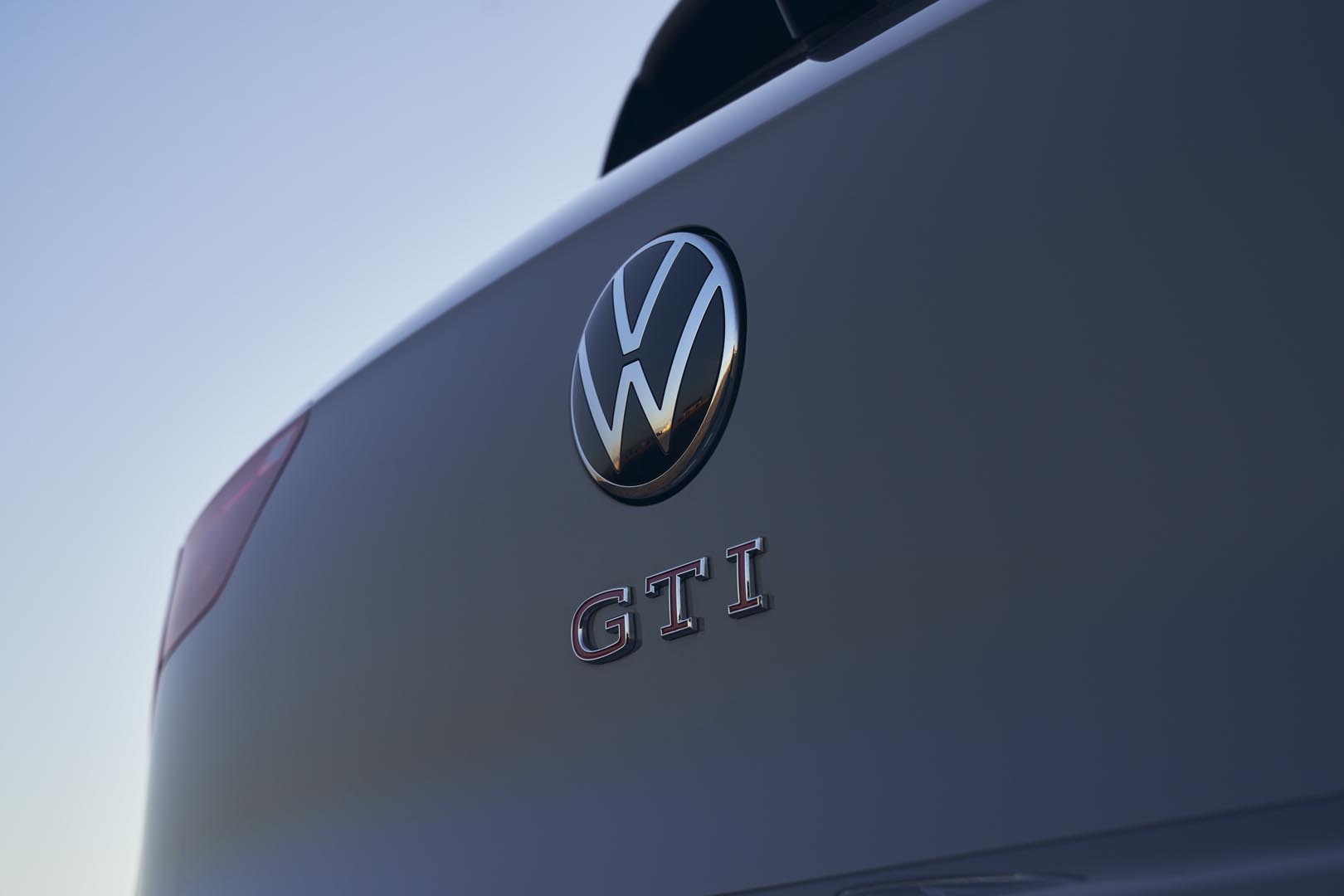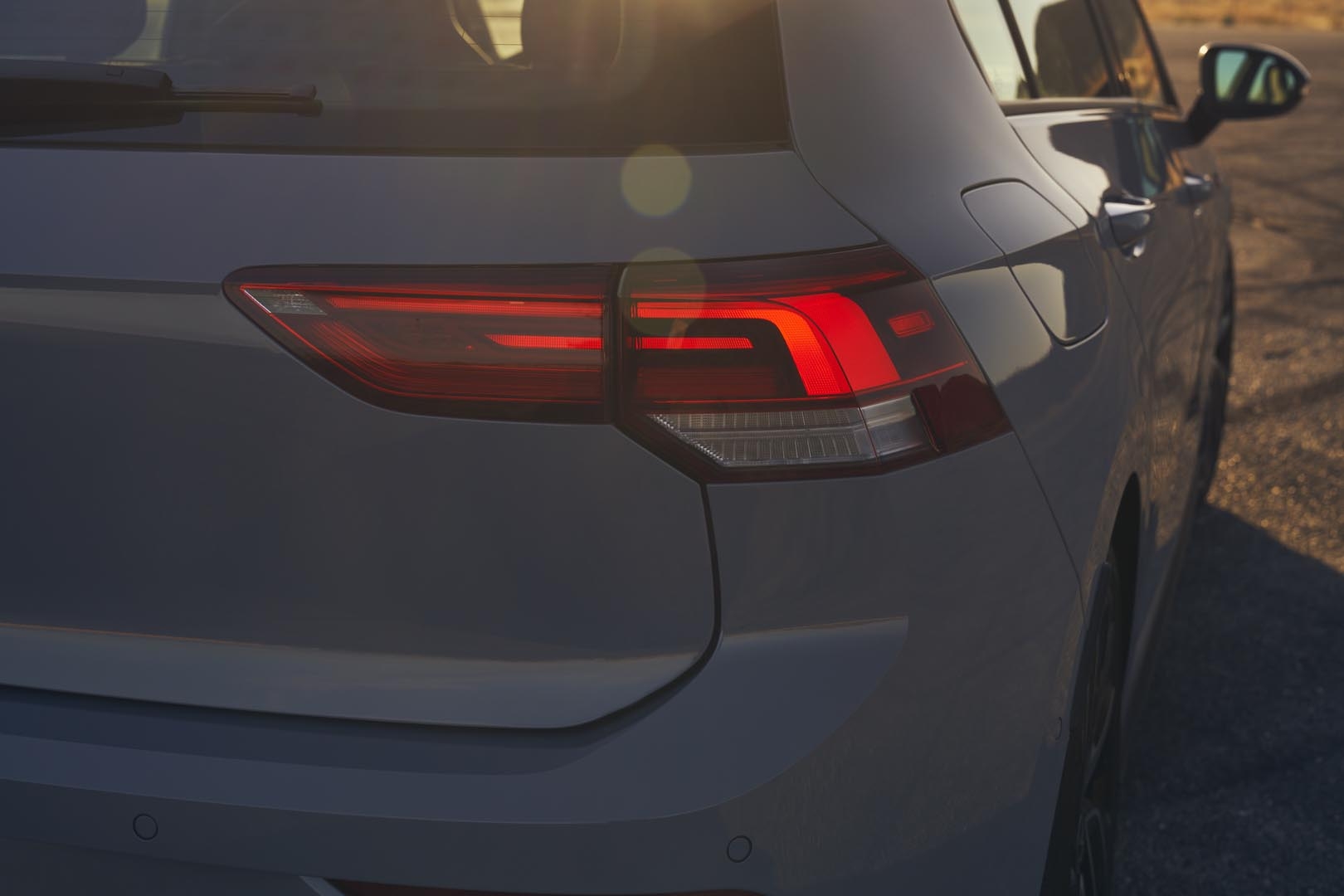
VOLKSWAGEN Golf GTI 2024
Our very last test drive in the manual version of a true icon
Pros and cons
Pros
- Absolute joy to drive
- Precise, communicative steering
- Sharp handling
- Pleasant manual transmission
- Peppy, economical engine
- Versatile cabin for the format
Cons
- Frustrating controls
- Torque steer during hard acceleration
- Manual gearbox to be discontinued
- Less-than-stellar reliability
- Lack of lumbar support (fabric seats)
Overview
Last year, the Golf GTI celebrated 40 years of cruising North American roads. This sports hatchback pioneer is now the only member of the Golf family on the continent, except for its even peppier R version cousin. The 2024 Golf also says goodbye to a component that was once part of the GTI’s very soul—the manual gearbox. Since there are still a few three-pedal models in stock in Quebec, we seized the opportunity to review this classic one last time.
Scroll down to the Evaluation section to find out what our experts think, in five highlights.
We were provided with a Golf GTI Performance with signature plaid fabric seats. The seats come at no extra cost in VW’s top-of-the-line Performance trim, which comes standard with leather bucket seats. At time of writing in July 2024, Volkswagen Canada’s website no longer listed the manual transmission for the base model. It’s priced at $37,245 with automatic transmission (including freight, preparation and dealer charges). You need to pony up for the Autobahn trim level (minimum $39,345) to get a “6-speed” GTI, or add another $4,100 for the Performance variant.
That’s a lot of money for a Golf, but since VW dropped “ordinary” versions of the nameplate from its lineup, the Jetta is the only VW that can be had for less than $30,000 (all fees included). The hatchback body style sets the GTI apart from the Honda Civic Si, Hyundai Elantra N and Subaru WRX. The trunk on these cars makes them more like the Jetta GLI, easily the most affordable model of the bunch.
The Mini Cooper S could be considered a GTI competitor, but it costs more with the same equipment. Then there’s the Mazda 3 Sport GT Turbo. It doesn’t have the GTI’s pocket-rocket image but it does boast comparable power and the advantage of all-wheel drive.
German construction pushes the Golf GTI’s price higher than the made-in-Mexico Jetta GLI.
Verdict
This Golf GTI is still a stunner despite its unnecessarily complex dashboard and still-shaky reliability record. That versatile body, that exceptional chassis stability, that constant thrill behind the wheel all add up to a unique blend of sporty car and daily driver. If you really want the original hot hatch, get yours fast before the manual gearbox gets phased out en route to the inevitable electrification of this automotive icon.
Evaluation
Small yet versatile
Even though the Golf has gotten bigger over the years, Volkswagen resisted the temptation to “inflate” it the way it did the Jetta and Tiguan. It has remained true to its roots, which is a good thing since it has always been spacious for its size. The current GTI can accommodate four people of average size on firm seats that prove comfortable on long rides. The superb fabric bucket seats hold front-seat occupants snugly in place, though we would have liked a little more lumbar support (even if it can be adjusted).
The trunk offers a reasonable amount of cargo space when all seats are occupied. It’s halfway between the smallish space in a Toyota Corolla hatchback and the massive cave in a Honda Civic hatchback. Families must still travel light, unless they mount a roof box on the Golf. For a couple’s getaway, you get a ton of space by just lowering the rear seats (even if the resulting surface is not perfectly flat). The Golf still has a handy pass-through that fits long objects under the rear armrest.
A head-scratching ergonomic step backwards
Volkswagen has long been renowned for fantastic cabin ergonomics. The Golf GTI’s driving position remains flawless, thanks partly to a centre height- and length-adjustable armrest. You can say the same about the highly customizable fully digital instrumentation, enhanced in Performance trim by a perfectly legible heads-up display.
And yet the new infotainment system completely spoils the show. The 10-inch screen is clear, but it has too many settings—including air conditioning—and often lags. Also, the few controls on the dashboard are touch-sensitive. They’re impossible to tell apart without taking your eyes off the road. Some are not even illuminated, while others require you to slide your fingers in a precise manner—even on the steering wheel.
If this annoyance puts you off, you can always choose the Jetta GLI, provided that you’re OK with a less spirited driving experience and a trunk. But hurry, since most of the Jetta’s real buttons will be touch-sensitive by 2025. At least its climate controls will remain separate, which means less distraction than in the Golf.
When performance rhymes with fuel economy
Fuel consumption of 8.2 L/100 km is nothing to write home about, especially in the age of electrification. But from a gas-only-powered sports car, and after we frequently used every ounce of its 273 pound-feet of torque in places like the hills of Charlevoix, this result merits attention. On the highway, cruising at a speed the authorities tolerate, the GTI’s fuel consumption indicator held steady at about 6.7 L/100 km. This roughly jibes with the 7 L/100 km published by Natural Resources Canada.
An automatic version driven in normal mode would probably do even better in combined city-highway driving, since the gearbox shifts at very low revs. It’s good to know that a fun, affordable ride doesn’t have to blow the fuel budget, especially since the engine takes regular gas.
The fun of engaging (the clutch)
Purists won’t yield: all the gearshift paddles in the world will never replace the sport of doing the work yourself using three pedals and a stick. This is especially true when the pedals are designed for heel-toe operation, the clutch is sufficiently progressive and light, and the gearbox is fun to shift. That’s what you’ll find in the Golf GTI, even if the best shifters are those of the Mazda MX-5 and Honda Civic Type R.
Obviously, the dual-clutch automatic transmission moves through the gears faster than most people could. This makes for a great setup when you want to beat the stopwatch on a track. It also avoids most of the hesitation and slippage typical of this type of transmission in urban areas. So much the better, since we’ll have to live with it in a few months … unless you opt for a Jetta GLI, whose manual gearbox was given a reprieve for 2025, or the Honda Civic Si or Subaru WRX. Enthusiasts be warned.
A European balance
Most of today’s cars (and even SUVs) offer performance that far exceeds what their drivers will use. Some of the least expensive models even pass the emergency avoidance tests of publications like Consumer Reports with flying colours. Far less common are the vehicles that do all this while letting the driver really connect with the road.
There’s no doubt that the Golf GTI is one of these cars. Its precise steering becomes heavier as speed and cornering forces increase. It also provides a great feel for the road, all while going exactly where you want it to go with perfect control. That control wavers only during flat-out acceleration, despite its virtual self-locking differential based on selective braking.
Excellent body lean control enhances the feeling of stability, especially when adaptive dampers are set at the sporty end of the performance spectrum. This does, however, stiffen the suspension to a degree that some people may find drives on bumpy roads to be uncomfortable. The best compromise setting resides nearer the “Comfort” end, which better insulates the cabin while maintaining the all-Teutonic solidity of the ride. We love the grippy Hankook Ventus Evo tires, even if they’re noisy on the highway.
Safety features
- Antilock brakes with electronic brake force distribution and emergency brake assist
- Stability and traction control
- Hill-start assist
- Front airbags
- Front side airbags
- Side curtain airbags
- Front seat belts with pretensioners
- Five headrests (front built in the backrest, rear adjustable)
- Rear occupant alert
- Backup camera
- Tire pressure monitor
- Forward collision warning
- Automatic emergency braking with pedestrian and cyclist detection
- Lane departure alert with automatic steering assist
- Blind-spot monitoring with automatic steering assist
- Rear cross-traffic alert
- Front and rear parking sensors
- Automatic high beam (standard in Performance trim, not available in base and Autobahn trim levels)
- Adaptive cruise control and active lane control (standard in Autobahn and Performance trim, not available in base trim)
Crash test results
National Highway Traffic Safety Administration
Overall score: Not tested
Frontal impact: Not tested
Side impact: Not tested
Rollover resistance: Not tested
Insurance Institute For Highway Safety
Moderate overlap frontal impact: 4 / 4
Small overlap frontal impact: 4 / 4
Side impact: 4 / 4
Rear impact: Not tested
Roof strength: Not tested
